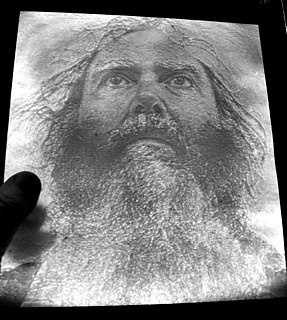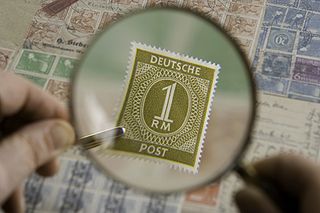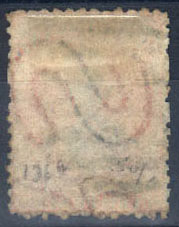 W
WA watermark is an identifying image or pattern in paper that appears as various shades of lightness/darkness when viewed by transmitted light, caused by thickness or density variations in the paper. Watermarks have been used on postage stamps, currency, and other government documents to discourage counterfeiting. There are two main ways of producing watermarks in paper; the dandy roll process, and the more complex cylinder mould process.
 W
WA banknote is a type of negotiable promissory note, made by a bank or other licensed authority, payable to the bearer on demand. Banknotes were originally issued by commercial banks, which were legally required to redeem the notes for legal tender when presented to the chief cashier of the originating bank. These commercial banknotes only traded at face value in the market served by the issuing bank. Commercial banknotes have primarily been replaced by national banknotes issued by central banks or monetary authorities.
 W
WCharles Moïse Briquet was a noted Swiss filigranologist. He was the first, or among the first, to suggest the use of watermarks for dating paper. He produced in 1907 the mammoth four-volume work Les Filigranes. His papers, including his collection of traced watermarks, are kept at the Bibliothèque de Genève.
 W
WA digital watermark is a kind of marker covertly embedded in a noise-tolerant signal such as audio, video or image data. It is typically used to identify ownership of the copyright of such signal. "Watermarking" is the process of hiding digital information in a carrier signal; the hidden information should, but does not need to, contain a relation to the carrier signal. Digital watermarks may be used to verify the authenticity or integrity of the carrier signal or to show the identity of its owners. It is prominently used for tracing copyright infringements and for banknote authentication.
 W
WThe EURion constellation is a pattern of symbols incorporated into a number of secure documents such as banknotes and ownership title certificates designs worldwide since about 1996. It is added to help imaging software detect the presence of such a document in a digital image. Such software can then block the user from reproducing banknotes to prevent counterfeiting using colour photocopiers. According to research from 2004, the EURion constellation is used for colour photocopiers but probably not used in computer software. It has been reported that Adobe Photoshop will not allow editing of an image of a banknote, but in some versions this is believed to be due to a different, unknown digital watermark rather than the EURion constellation.
 W
WA light-and-shade watermark, is a watermark image produced in a chiaroscuro style. In a traditional watermark, an image is produced in paper fibers by contrasting shades of light and dark in places where the paper is made thinner or thicker during the printing process. The resulting image has a high-contrast "black and white" quality with no graduated shading in between. In a chiaroscuro watermark, however, the fibers in the paper run from thin to thick, producing an image with many shades from light to dark. The technique was first developed in 1848 by William Henry Smith as a method to help prevent counterfeiting.
 W
WA Machine Identification Code (MIC), also known as printer steganography, yellow dots, tracking dots or secret dots, is a digital watermark which certain color laser printers and copiers leave on every single printed page, allowing identification of the device with which a document was printed and giving clues to the originator. Developed by Xerox and Canon in the mid-1980s, its existence became public only in 2004. In 2018, scientists developed privacy software to anonymize prints in order to support whistleblowers publishing their work.
 W
WPostage stamp paper is the foundation or substrate of the postage stamp to which the ink for the stamp's design is applied to one side and the adhesive is applied to the other. The paper is not only the foundation of the stamp but it has also been incorporated into the stamp's design, has provided security against fraud and has aided in the automation of the postal delivery system.
 W
WThomas Harry Saunders, usually called T. H. Saunders, was a British paper-maker known especially for his watermarks, and also a philanthropist.